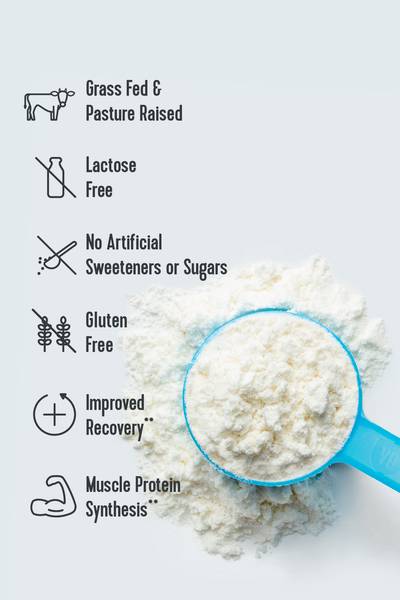We love to be a source of inspiration when it comes to your workouts. FromHIITto core exercises, there are all kinds of ways to keep your body moving. And while we love to provide you workouts to help you reach your fitness goals, there's something that isn't always talked about enough — taking rest days.
Knowing when to take a rest day can be just as important as the workout days themselves. So we tapped a few fitness experts help you make the most of yourwellness routine, which means, yes, making sure to take time off to recover.
Vital note:This article has been made available for informational and educational purposes only. It is not intended to be a substitute for professional medical advice, diagnosis, or treatment. Always seek the advice of your physician or another qualified health provider with any questions you may have regarding a medical condition. Your licensed healthcare professional can best provide you with the diagnosis and treatment of any medical condition and assist you as well in deciding whether a dietary supplement will be a helpful addition to your regimen.

Is it important to take a rest day from working out?
All fitness professionals will tell you the answer to this is a resoundingyes. Like physically working on your fitness goals, taking recovery days can also help you progress toward your goals. This is because "workouts are physically demanding and cause stress on the heart, lungs, muscles, joints and the rest of the body. [Therefore] rest is needed to heal the body and to provide energy to complete your daily tasks," says Lisa Payne, CPT.
Should I take one day off a week from working out?
Knowing when to take a rest day comes down to taking cues from your body. Checking in to see how you're feeling, what's hurting, etc. will determine when and how many rest days to take. Key signs to look for on a rest day include the following 5 things
- You're extra sore.There are 2 forms of muscle pain. “Muscle soreness felt during or immediately after a workout is called acute muscle soreness. Delayed-onset muscle soreness, or DOMS, is experienced 1 to 2 days after a tough workout,” says Payne. If you’re experiencing either of these, adequate rest and maintaining both a balanced diet and workout plan is key to recovering and even avoiding injury.
- You're injured.Maybe this is an obvious one, but it can be tough to sit out a workout (especially if you’re on a good streak with them!). Exercising while injured can exacerbate the problem more, so we recommend consulting with your doctor on when it’s appropriate to return back to the gym room floor.
- You're sick.Not feeling 100 percent? Give it a rest! "Muscling through being sick isn’t going to help anyone," says Payne. In terms of what's okay to work through, and what's not, "a good rule of thumb is if you’re experiencing cold symptoms above the neck like a headache, congestion or sore throat, it’s okay to exercise," she says. "But if your symptoms are below the neck and include chest congestion, vomiting or fever, stay in bed." Note: As always, consult a doctor to see what's best for you!
- You're running low on sleep.If you're running low on sleep, or feeling depleted from a tiring few days, consider skipping a gym session to ensure you can be energized and focused for your next one!
- You trained too hard.More is not always more. "When your body isn't getting enough rest, overuse injuries, moodiness, insomnia, digestive issues, chronic soreness and inflammation are all signs you’re overtraining," says Payne.**
Related Articles
Is it bad to workout every day?
While you may be thinking, "I'm clear of all the warning signs and I want to keep up my daily workout routine!"
While we love the optimism, we can't emphasize taking a rest day enough. "Rest days are absolutely needed, especially when you're strength training," says Hickey.
This is because your muscles repair themselves during rest. So, if you're training every day, you'll actually limit the growth of muscle mass and you'll increase the chance of becoming injured,” Hickey adds.
How often should I take a rest day from working out?
According to theCenters For Disease Control(CDC), 150 minutes of moderate exercise a week is recommended. This may sound like quite the undertaking, but when you break it down, it comes out to about 30 minutes a day, five days a week, which allows for some days off.
According toJamie Hickey, Nutritionist and Founder of Truism Fitness, most people find that one to two rest days per week is the sweet spot for them.
"While these days can be spent totally abstaining from exercise, they may also be spent incorporating active recovery into the day. Active recovery is basically a lighter or easier workout than what an individual would normally perform such as a walk or yoga," he adds.
That said, the type of body part you’re working out can determine your rest day rate as well.
"If you're doing full-body workouts, then you'll only perform two to three workouts per week," he says. "If you're only doing one or two muscle groups a day then you’ll need to work out five times a week."
But that doesn't mean on rest day you have to stick to the couch.
What is a good rest day workout?
Hickey recommends doing easy, low-effort workouts on rest days. Here are a few good ones to get started with
- Vinyasayoga
- Calming yoga poses
- Walking
- Expert-led stretching















